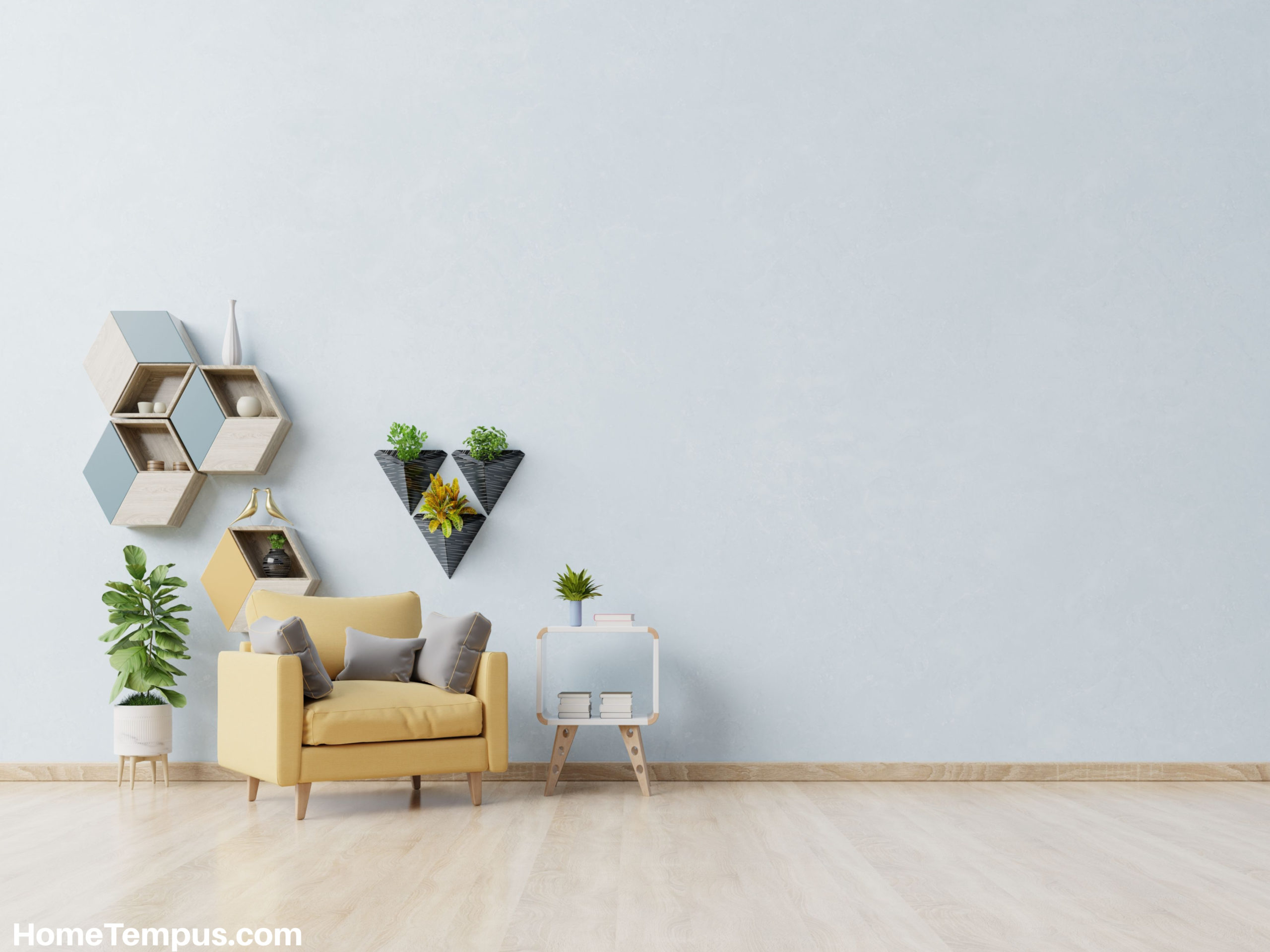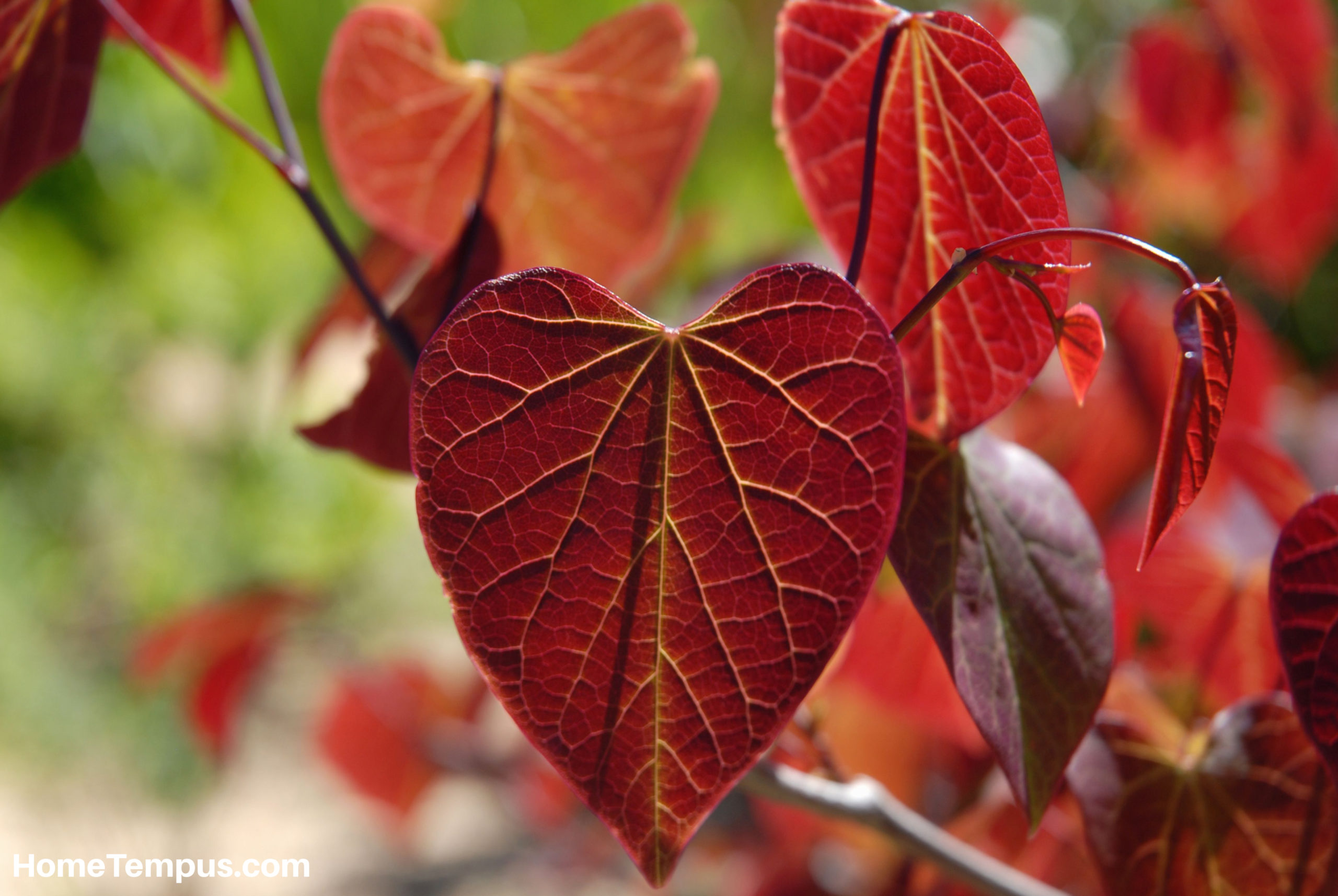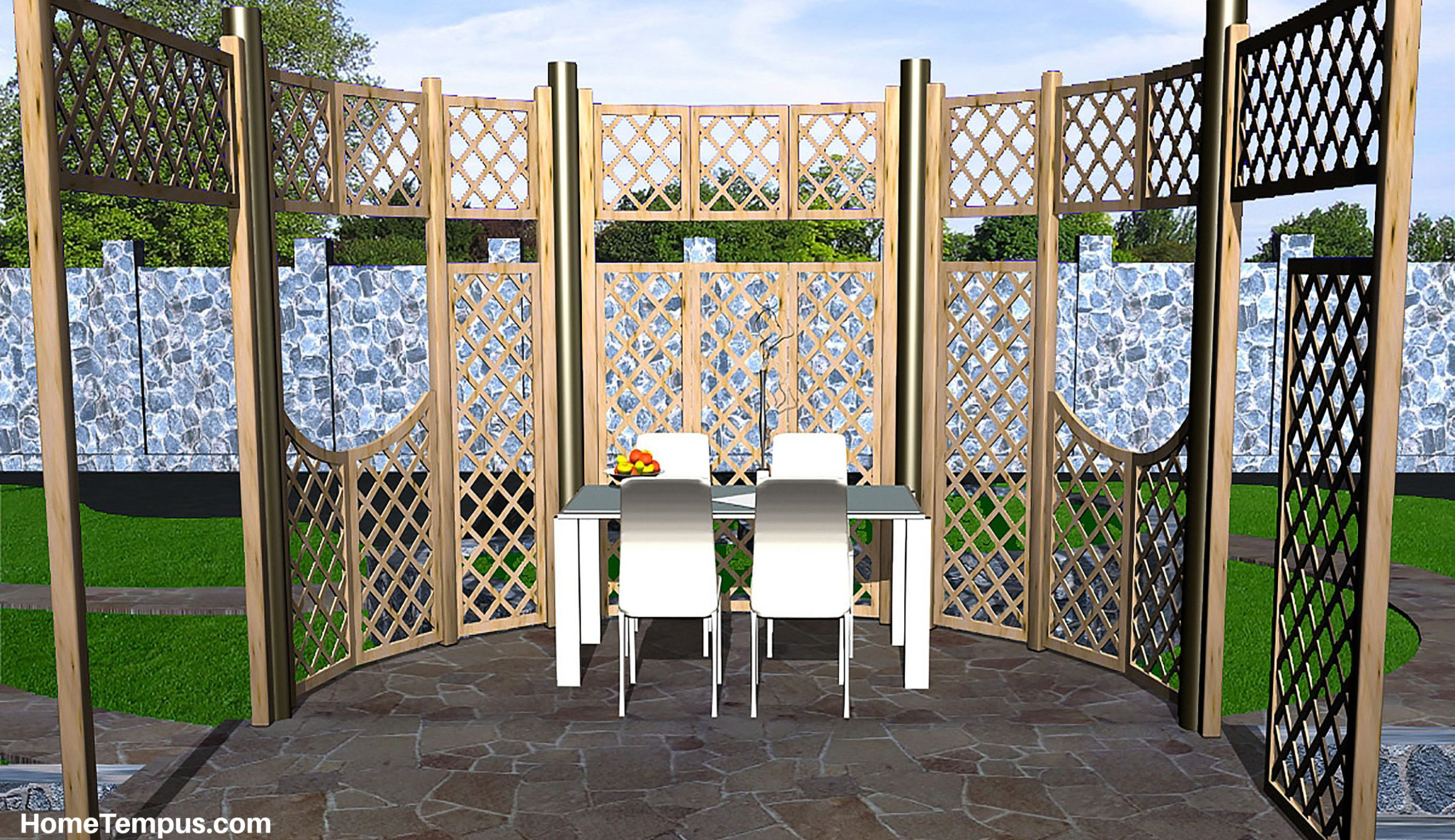Succulents that look like coral are among the most striking in this family of pretty weird plants. Many of the succulents almost do not look like plants. With strange shapes and spikes, many look more like living coral and imagining them as part of a coral reef is not a big flight of imagination.
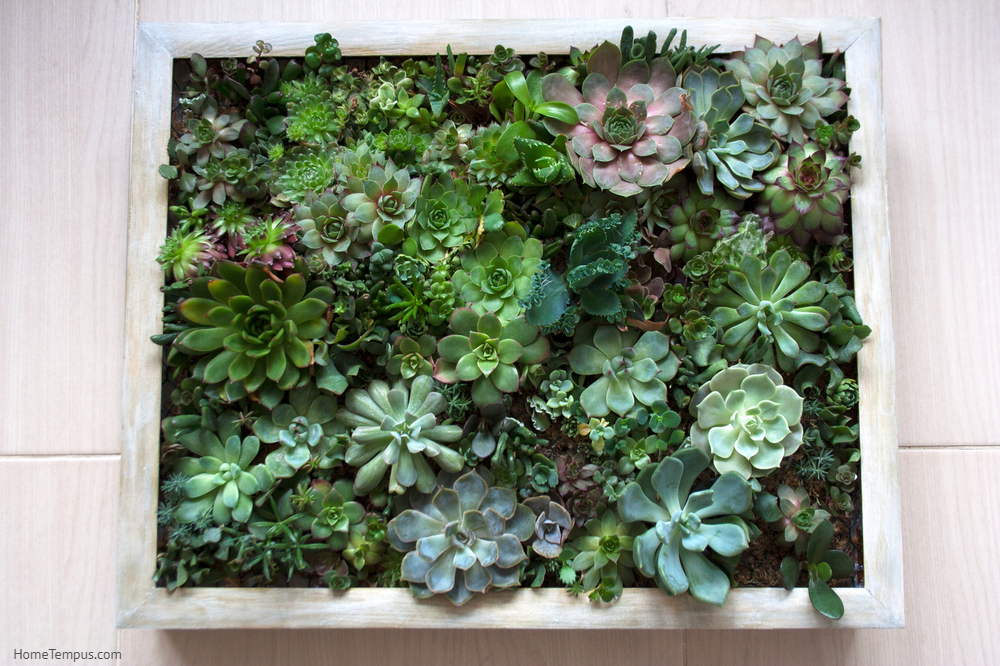
Various succulent plants arranged in living picture composition with wooden beige frame
So, if you have caught the succulent bug and are ready to have your own collection, why not grow your own coral reef? It is great fun to do during long, cold winter months.
Euphorbia tirucalli “Firesticks”
Common name: Firesticks, Pencil cactus
Scientific name: Euphorbia tirucalli “Firesticks”
Country of Origin: South Africa and India
Firestick or Euphorbia tirucalli is one of the most popular succulents for its vivid color and ease of care. Native to Africa, it is now spread all over the world and grown mostly indoors where the weather is not warm enough to keep outdoors year-round.
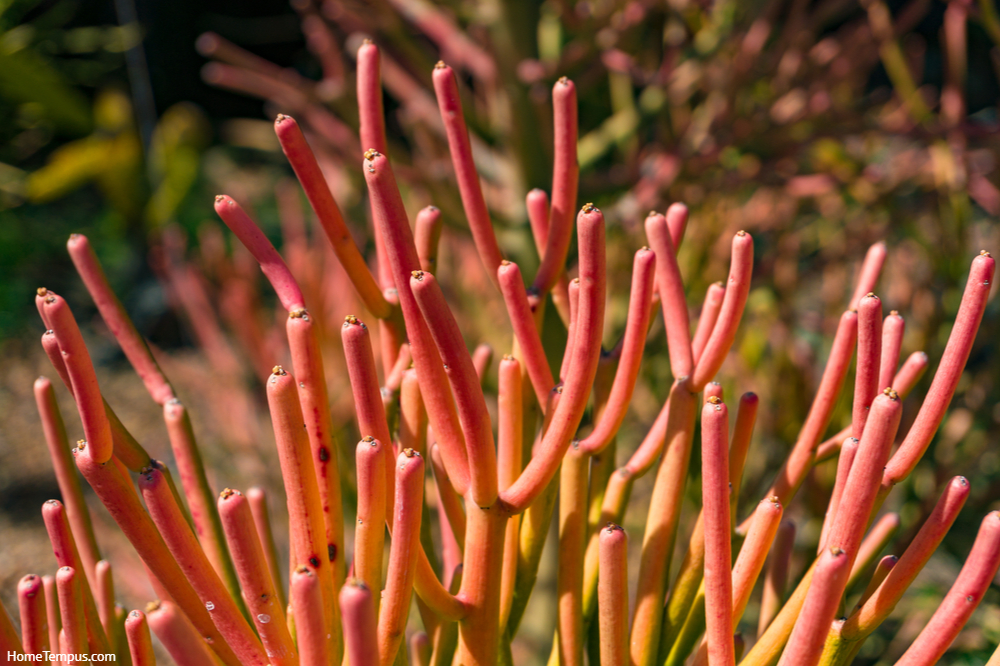
Bright orange red Firestick plant in the garden.
Firestick stems change their color as the temperature changes, ranging from orange and yellow to green, to become fire red during cold winter months.
This plant grows pretty tall, almost tree-like. If you do not want a ten-foot Firestick in your living room, you have to trim it regularly. Use trimmed stems to grow new plants.
How to care for your Firestick
Euphorbia tirucalli requires full sun if planted outdoors or at least six hours of direct light if kept indoors. If you do not give them enough light, the branches will stay green and will never reach vivid orange and red tint.
Plant your euphorbia in free-draining soil. The easiest is to use commercial cactus mix and add 50 percent coarse sand or perlite.
If your soil is good, you cannot overwater your euphorbia, and overwatering is the greatest problem you can have with them.
Water only after the soil is dry, once a week in summer and once in two weeks in winter. Put your finger in the soil to make sure it needs watering.
The sap of Euphorbia tirucalli is toxic and can burn your hands. Wear gloves when handling. Keep away from kids and pets.
Rhipsalis cereuscula
Common name: Coral cactus
Scientific name: Rhipsalis cereuscula
Country of origin: Tropical rainforests of South America
If not for its bright green color, you could swear that the Coral cactus is an actual coral. The small shrub grows dense, with plenty of branches that turn red when the temperature drops.
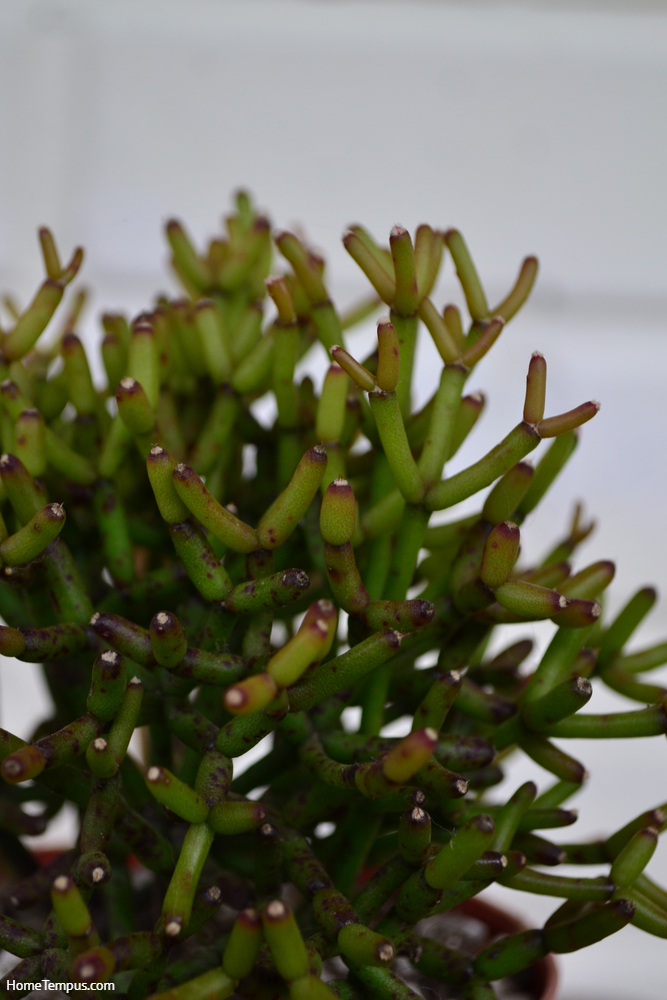
Close-up of the leaves of this beautiful plant called “cereuscula rhipsalis”.
Although belonging to the cactus family, Coral cactus does not have thorns and it is not toxic.
It will grow up to 24 inches and it grows slowly. When long enough, the branches will start spilling over the rim of the pot.
Ideally, Coral cactus should be grown indoors unless you live in the tropics. It makes a lovely potted plant and is perfect for mixing with other succulents of different shapes or colors.
Recommended reading:
Flowers That Start with H | Make a Breathtaking Backyard
How to care for your Coral cactus
Like other succulents, Coral cactus requires free-draining soil. Make sure that the pot it lives in has a drainage hole.
When watering, water thoroughly until water starts coming out of the hole. Do not water again until the soil is completely dry.
That means usually once a week in summer and once a month in winter.
Your Coral cactus will go dormant in winter and will stop growing. Do not fertilize during this period. This plant is not frost-hardy so do not let it get too cold.
Senecio mandraliscae
Common name: Blue chalk stick, blue finger
Scientific name: Senecio madraliscae
Country of Origin: South Africa
Blue chalk stick is a beautiful bright blue succulent that looks like coral. It grows to 18 inches, with up to six-inch-long blue finger-like leaves that grow straight upward. In summer, each little leaf produces small white flower.
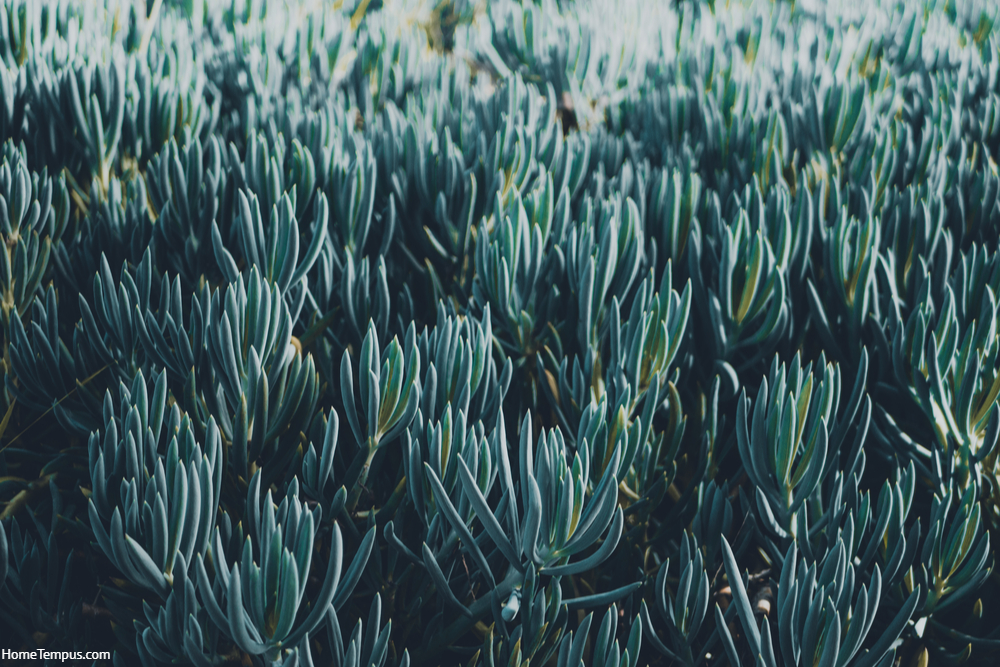
Senecio mandraliscae (Blue Chalk Stick Succulent)
If you live in a tropical climate, you can plant your Chalk stick outdoors where it will form a dense ground cover. In colder places, plant it in a large pot. Blue chalk stick looks fantastic when planted in a large pot with other succulents that look like coral of different colors.
How to care for your Chalk stick
Plant your Blue chalk stick in free-draining soil. A mix of cactus soil with 50 percent coarse sand works perfectly. If planting in a pot, make sure the pot has a drainage hole.
Plant in full sun or dappled light shade. If kept indoors, keep in bright direct light. If the temperature goes under 20° F it will freeze.
Water your Blue chalk stick only when the soil is dry. Put your finger in the soil to make sure. No succulent likes to be overwatered. . You will find out that it does not need watering more than once a week in the summer and once a month in winter.
It will go dormant or grow very slowly in winter so do not fertilize until spring. Use slow-release cactus fertilizer.
Sedum rubrotinctum
Common name: Christmas cheer, Jelly bean plant, Pork and beans plant
Scientific name: Sedum rubrotinctum
Country of Origin: Mexico
Jelly bean is a lovely succulent that looks like coral with bright green leaves that really look like jelly beans. The leaves turn red at the tips when placed in full sun.
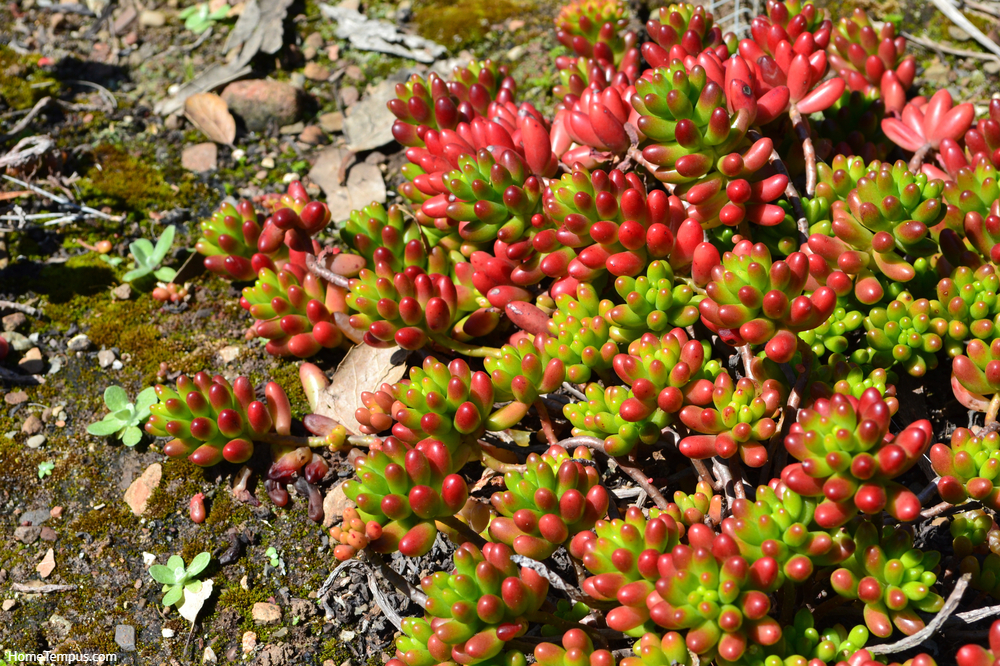
Sedum rubrotinctum. Green and red.
The leaves grow on a woody stem and produce bright yellow flowers between the leaves in spring. Jelly bean grows vigorously in summer and it can reach 12″. It is toxic to people and animals.
How to care for your Jelly bean
Sedum ribrotinctum is not hardy and is best planted in a pot and kept indoors when the temperature drops below 20 degrees.
Keep your Jelly bean in full sun if you want to enjoy the bright red tips.
Plant in free-draining soil (commercial cactus mix with coarse sand works well.)
Water thoroughly and let the water drain through the drainage hole. Water only when the soil is dry when touched with a finger.
Crassula ovata
Common name: Finger plant, Shrek’s ears
Scientific name: Crassula ovata
Country of Origin: Namibia and South Africa
Of all the succulents that look like coral, Crassula ovata comes closest. Long green tubular leaves have vivid red tips and grow from the thick brown trunk.
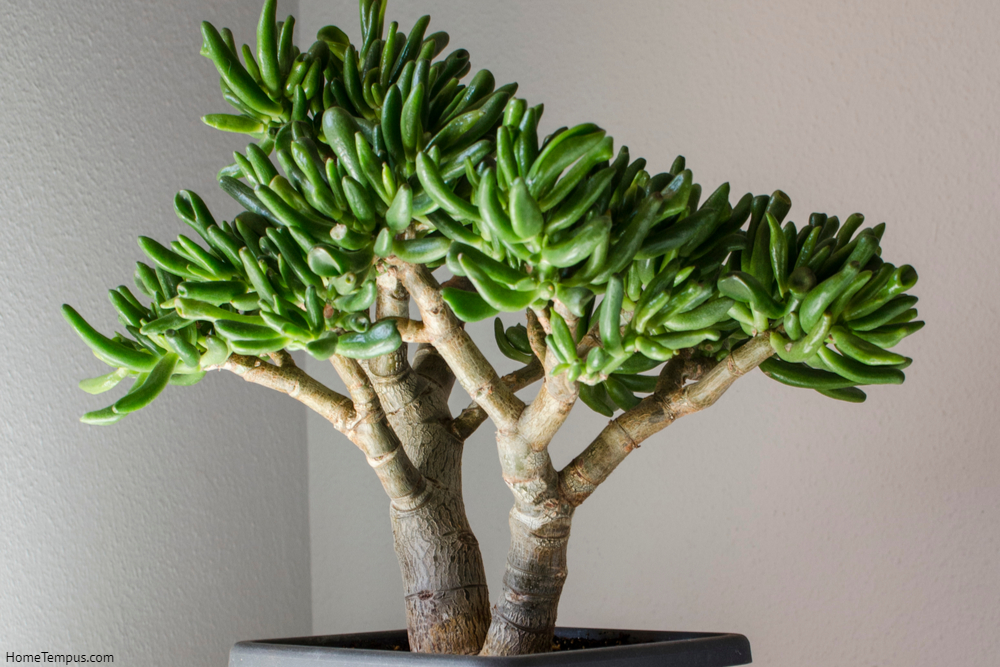
Crassula ovata gollum. Bonsai style.
Crassula ovata grows up to three feet and because it is not hardy under 20 degrees, it is best planted in a pot. Some hybrids grow bigger, with dark green leaves.
This crassula blooms occasionally when in the right conditions and produces pink-white star-shaped flowers in spring.
How to care for your Crassula ovata
As with other succulents, plant your crassula in free-draining soil like cactus mix with added coarse sand.
This plant is very sensitive to overwatering, so make sure you do not water it until the soil is dry to the touch. The pot should have a large drainage hole.
Keep your crassula in full sun or direct light if kept indoors. Its sap is toxic to humans and animals, so keep out of reach of little fingers or paws.
Recommended reading:
Flowers That Start With L | Find a Diversity of Gorgeous Blossoms
Graptopetalum paraguayense
Common name: Mother-of-pearl-plant, Ghost plant
Scientific name: Graptopetalum paraguayense
Country of origin: Mexico
Graptopetalum paraguayense is just one of the several species in the crassulacea family, but graptopetalum paraguayense really looks like succulents that look like coral. It has bluish-grey fleshy leaves that look like little rosettes. Leaves have a light powdery coating that makes them look like mother-of-pearl.
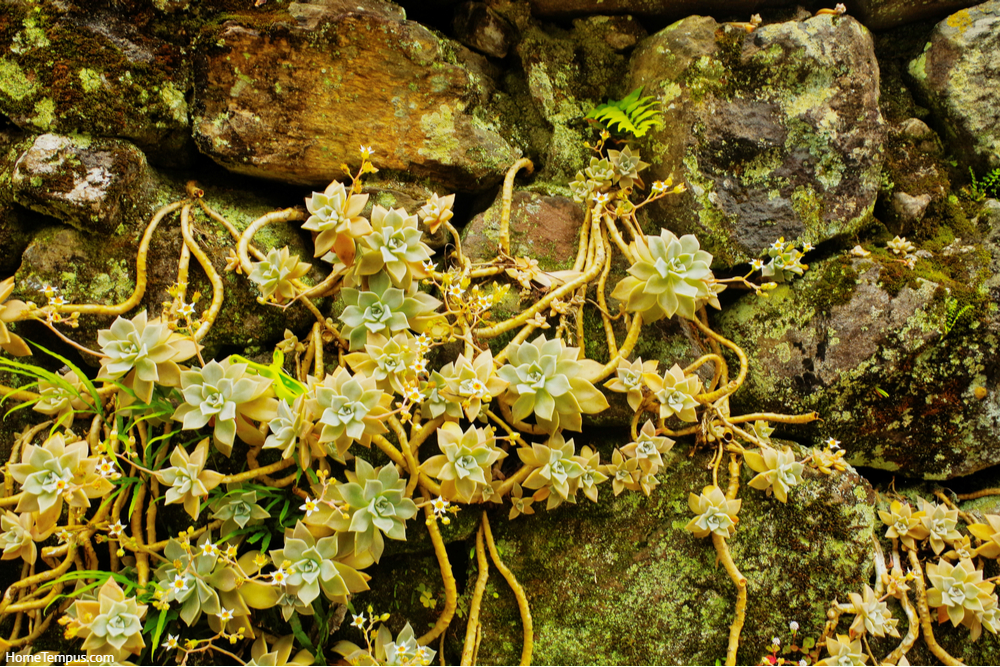
Ghost plant , Sedum weinbergii , Mother of pearl (Graptopetalum paraguayense)
The leaves turn yellow-pink in heat and bluish-grey in shade. This plant is more winter-hardy than most crassulas.
The plant grows up to one foot and can trail up to three feet. Rosettes can grow up to four inches in diameter.
How to care for your Ghost plant
Plant your Graptopetalum in free-draining soil such as cactus mix with added coarse sand or perlite. Keep it in full sun if in the garden or in direct full light if kept indoors.
Water like other succulents only when the soil is dry to the touch. Fertilize in spring with slow-release cactus fertilizer or not at all, it would not hurt it.
Gymnocalycium mihanovichii
Common name: Moon Cactus, Ruby ball, Red cap
Scientific name: Gymnocalycium mihanovichii
Country of origin: South America
Moon cactus is one of the succulents that look like coral that appear like they came straight from the depth of the ocean. It is called “mutant” because it is made of two cacti, Gymnocalycium, the weird part on top which is grafted to the rootstock such as Hylocereus. Moon cactus has usually yellow and orange top, but red is also possible.
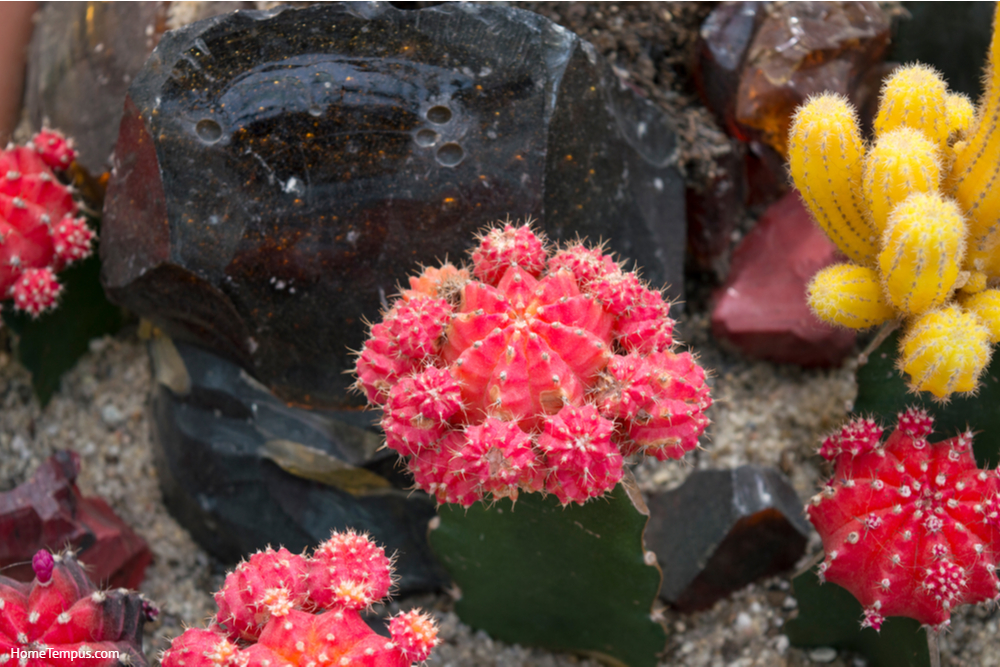
Bright red cactus gymnocalycium mihanovichii
Interestingly, the Gymnocalycium part is found growing naturally in Uruguay and Argentina. It has 8 narrow notched ribs and 5 to 6 weak, slightly curved yellow thorns. This cactus produces a large five cm long funnel or bell-shaped yellow or green flowers.
How to care for your Gymnocalycium mihanovichii
Moon cactus is usually grown as an indoor plant. It likes partial sun and tolerates partial shade. Plant it like any other succulent in free-draining soil, such as cactus mix with added coarse sand or perlite.
Water only when the soil is dry to the touch. Water thoroughly until water comes out of the drainage hole in the pot.
This cactus does not tolerate cold. Keep it away from the draft. It is not toxic to humans or pets.
Cereus forbesii monstrose ‘Ming Thing’
Common name: Ming Thing
Scientific name: Cereus forbesii monstrose ‘Ming Thing’
Country of origin: Bolivia
Ming Thing is another worthy candidate for your collection of succulents that look like coral. It is a blue-green and columnar succulent, naturally mutated version of Cereus forbessi.
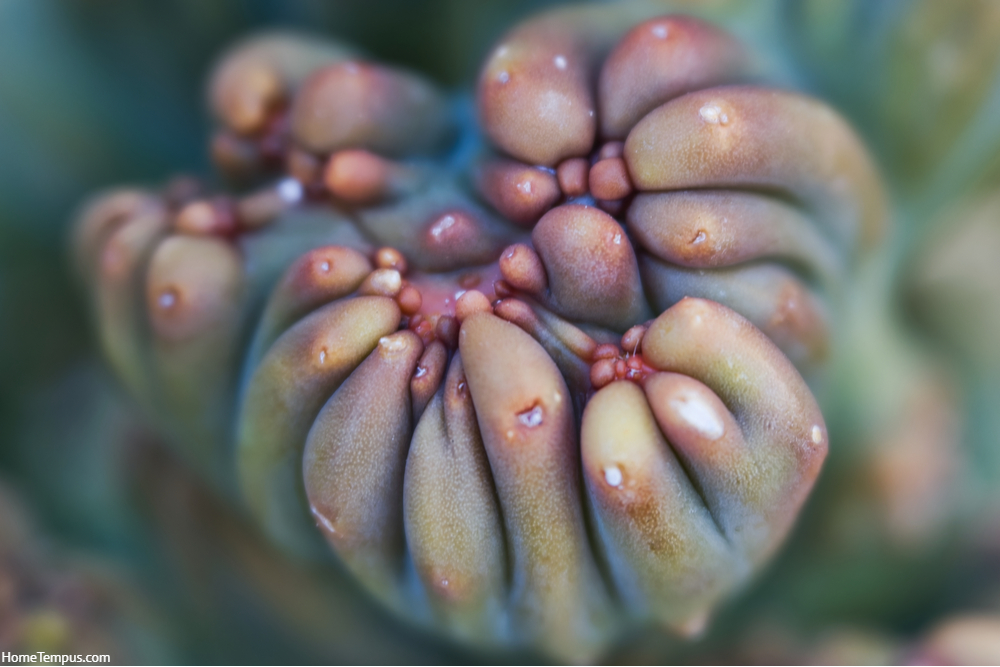
Close-up of a Ming thing succulent cactus
Its club-like misshapen ‘leaves” have short black spines. It grows in clusters that occasionally produce white flowers. This weird succulent makes a very interesting addition to any succulent arrangement.
Ming thing grows up to one foot.
How to care for your Ming Thing
Ming Thing tolerates conditions with less light than most succulents and cacti but it still needs bright indirect light when grown indoors.
Plant it in the free-draining soil in a pot with a large drainage hole. It should never have its roots wet. Water only when the soil is completely dry.
Recommended reading:
Anacampseros Rufescens | Sand Rose Complete Guide
Opuntia Hybrid Crest ‘Roller Coaster’
Common name: Roller coaster
Scientific name: Opuntia hybrid cristata ‘Roller Coaster’
Country of origin: hybrid
This is another weird succulent that looks like coral, with its broad, flat stems that twist and turn like a roller coaster. It has oblong leaf-like tubercles covered in wispy white hairs.
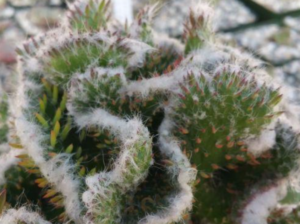
When grown in full sun, the ‘leaves’ of ‘Roller Coaster’ get rosy red blush. It grows most vigorously in the summer and you will know it is not getting enough sun if it loses its color.
The Roller coaster goes dormant in winter. It is not winter-hardy
How to care for your Roller coaster
Grow in full sun in a free draining soil such as cactus mix with added coarse sand. A pot has to have a large drainage hole. Water only when the soil is completely dry to the touch. Water thoroughly, best by soak and drain method.
Sinocrassula yunnanensis
Common name: Chinese jade
Scientific name: Sinocrassula yunnanensis
Country of origin: China
Large clumps of Sinocrassula yunnanensis really appear like succulents that look like coral, especially when they are dark, even black. This small rosette succulent grows up to 4 inches tall.
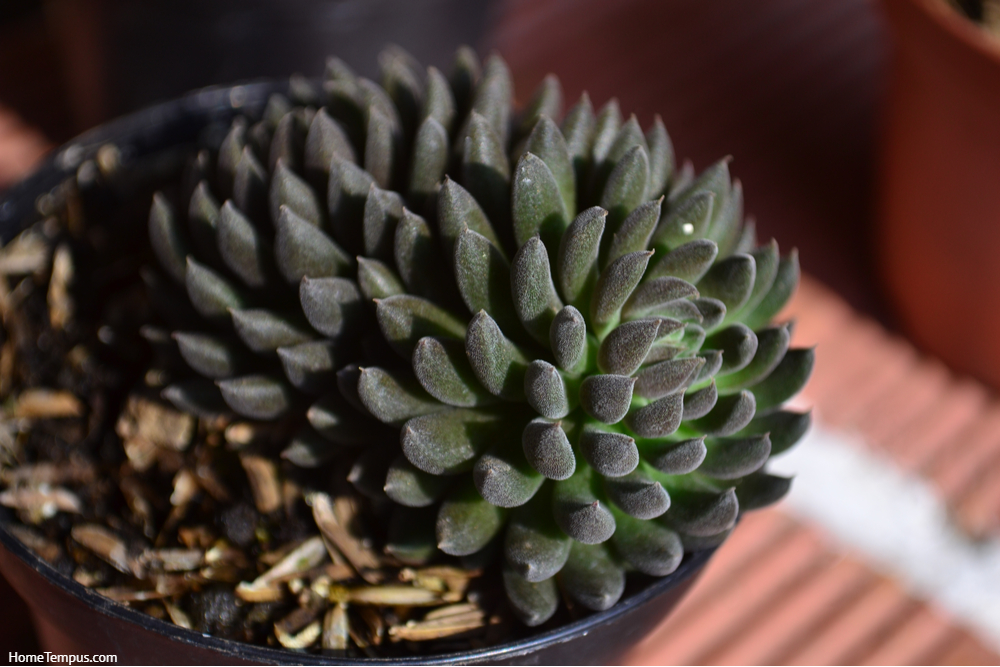
The wonderful succulent Sinocrassula Yunnanensis
In time it develops into dense clumps. Half-round leaves are flat on the top and covered in fine hairs. Each rosette grows up to an inch and a half in diameter.
They come in a different shade of grey and green and even almost black. They bloom once in their life and then die. The flowers are small and white.
How to care for your Chinese jade
Like most succulents, your Chinese jade likes bright light or full sun but tolerates partial shade. It is not winter hardy.
Plant in coarse soil that drains well. Water only if the soil is completely dry to the touch. Too much water can kill your Chinese jade
Conclusion – Succulents That Look Like Coral
Growing succulents that look like coral is great fun, especially if you put a bunch of them together like some weird mutant coral reef. Combine them for different heights, shapes and colors and put them under some bright indirect light and they will thrive and impress all your friends.
